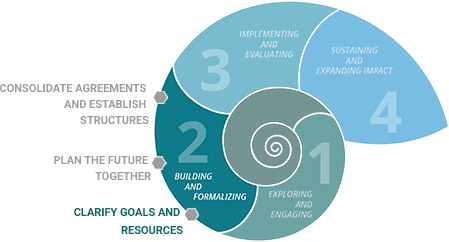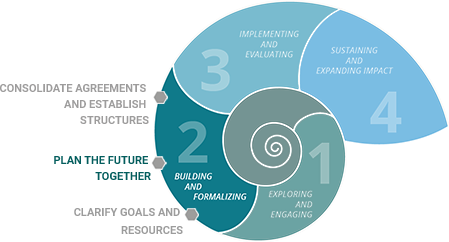
The interest and commitment of stakeholders that has been built up during Phase 1 is formalized in Phase 2. It is important to strengthen the core group’s role (the Container), to clarify which stakeholders are willing to participate actively in the collaborative change initiative, and to determine who will contribute (and how) to reaching the common goals. The purpose and goal of a the collaboration initiative held mainly by a small group of stakeholders (the Container) in Phase 1 now need to be discussed, agreed upon, and, finally, owned by a larger number of stakeholders. This may require modifying or adjusting purpose and goals so that all stakeholders can identify with the way forward.

In Phase 2 it is time for joint vision development and agreed upon implementation plans. The collaboration initiative becomes visible from the outside – sometimes in the form of large public, events, in which all significant stakeholders participate. It is important to prepare and design the events so that visible results can be reached. Collaboration ecosystems become successful if people engage emotionally: with the possible future, with the form of dialogue and collaboration, and with each other. The design of meetings, events or conferences needs to take this into account.

This is the time when the collaboration initiative needs sufficiently contained structures. While the process of engagement in Phase 1 is more informal and emergent, it is crucial that this now finds a more formal expression. Stakeholders need to be able to identify with the initiative and their participation. Consolidating agreements is of utmost importance. The form of agreements can be different according to the form and purpose of the collaboration initiative, It is important that the participating stakeholders commit to the goals and are clear about the way forward. Process architectures must be reliable, trustworthy and dependable.
